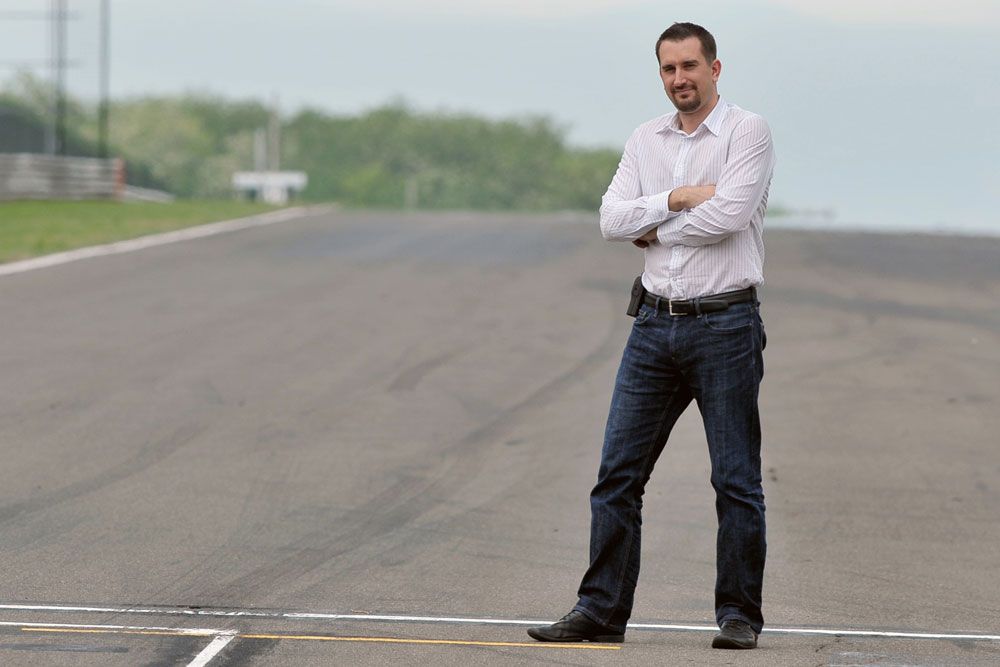The Race Director of Hungaroring was the guest of the Corvinus Tourism Club

Many students came to listen to Tamás Zettner’s presentation at the Corvinus Tourism Club in May, where he said that as his father worked as a competition referee, he was introduced to motor racing at an early age, but his first impression with the sport was a noisy one. In 1999, he started to work as a competition referee in his spare time. In 2010, he was already a licensed competition referee, and although he had already studied at university level in 2014, he did not graduate because he felt he had to choose between Hungaroring and studying, and he chose Hungaroring. Today, he directs the Formula 1 officials, i.e. 5 to 600 people: marshals, attendants, technical rescue vehicle, medical and ambulance cars.
The Hungarian Grand Prix has existed since 1986 and is growing in popularity. As Tamás Zettner told us, in the very first year, the foreign competitors brought a lot of Coca-Cola with them, thinking that in a (then) socialist country you could not get Coca-Cola, but then they were very surprised when they saw the huge Coca-Cola posters at the airport. This year, the “speeding circus” will take place a little earlier than usual, from 21-23 July, but tickets are scarce, with prices ranging from €130 to €500.
“The big attraction of the Hungarian Formula 1 is its proximity to Budapest, the Mogyoród circuit is 18 km from the Chain Bridge, and there are also many good hotels, such as Kempinski or Four Seasons, which are popular with visitors. 80% of tickets are purchased by foreigners, who find the price cheap, while the domestic audience finds it expensive.
According to Zettner, the Hungaroring, which is 100 percent Hungarian-owned, is very safe. “Unfortunately, there is no such thing as 100 per cent safety in this sport, and we have to accept that,” said the race director. But in Mogyoród, they really do their best to keep spectators and drivers safe: they start preparing for following year’s Hungarian Grand Prix just as the current edition is about to end. Lessons are learned, the steering and organising committee meets later, even the Counter Terrorism Centre (TEK) is involved in the preparations. Hungarian attendants – who are needed when unexpected problems do arise – are notoriously good and fast. Zettner said that the organisers and the attendants communicate with each other using codes (similar to air traffic control), which speeds up communication, as seconds count in case of any kind of trouble. Before the start of the race, a full systems test is carried out to ensure that everything is running smoothly and safely.
The Hungaroring is a so-called retro circuit (it works in analogue mode), but Zettner said that considerable IT development plans have been elaborated, as in other industries, digitisation will play an increasingly important role in motor sport. “The role of human resources will gradually diminish, and sooner or later the system of marshals and the flag wavers will disappear,” the race director said. He stressed that sustainability and environmental protection were important aspects of renewal. Of course, it is not possible to make cars completely electric, but there will be progress in this area. Visitors can also do a lot to help the environment: every year they are asked to use public transport to get to the competition, not to throw cigarette butts under the stands. By 2025, full waste collection will be fully selective at the Formula 1 race.
Zettner also said that the biggest opportunity he has had in his career so far was going to Mexico in 2015 with several others to give advice on how to organise the Mexican Grand Prix really effectively. As a matter of fact, they saw that the Hungarians were working with great enthusiasm, with slightly outdated technology, and “they had to do everything very well with very little money, and that is appreciated in the world of sport, too.”
It goes without saying that Zettner also spoke to the audience about what it was like to experience first-hand the crash of Ferrari driver Felipe Massa in Formula 1 in 2009. For his quick and efficient assistance he was later awarded the Brazilian Automobile Federation’s Medal of Honour. It was a great experience for the race director when he once had the opportunity to ask Kimi Räikkönen during an event if he could get used to the onslaught of photographers and journalists, to which the racing driver replied succinctly: no.
After the presentation, participants could ask questions. The girls were perhaps even more interested than the boys. Asked if he himself had not wanted to be a racing driver, Zettner said: Me and racing? No, I’m not that competitive. Finally, he advised the audience to do what they love, “chasing childhood dreams is what keeps us alive”.
Written by Katalin Török